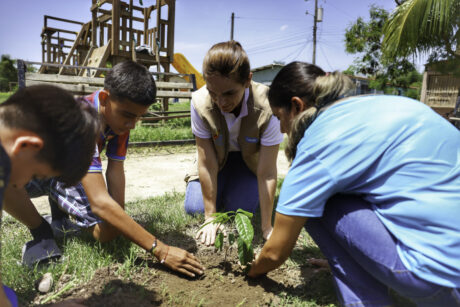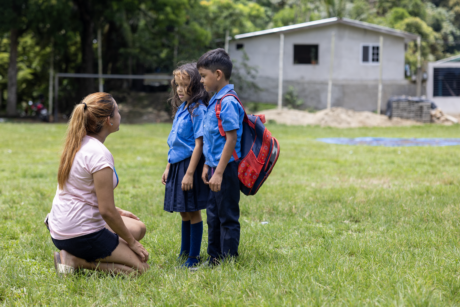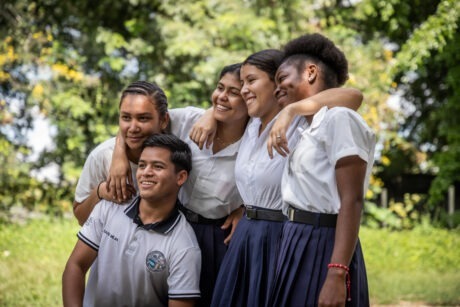El uso de una “perspectiva de género” en la programación de desarrollo internacional ha permitido avanzar en la comprensión y el tratamiento de las desigualdades., particularmente en lo que respecta al empoderamiento de las mujeres y la prevención de la violencia de género.
Sin embargo, El género representa sólo un aspecto de una compleja red de disparidades sociales y dinámicas de poder., y un enfoque únicamente de género no logra abordar los diversos factores que dan forma a la vulnerabilidad. Promover la equidad y la inclusión de manera efectiva, Reconocer todo el espectro de la marginación es crucial.
un nuevo análisis interseccional realizado por USAID Sembrando Esperanza La actividad en Honduras subraya la necesidad de un enfoque más matizado para comprender la vulnerabilidad y el riesgo.. Al examinar la interacción de más de 20 Factores de identidad de hondureños en situación de riesgo frente a la delincuencia., violencia y migración irregular, el análisis proporciona una comprensión integral de los factores que dan forma a la vulnerabilidad.
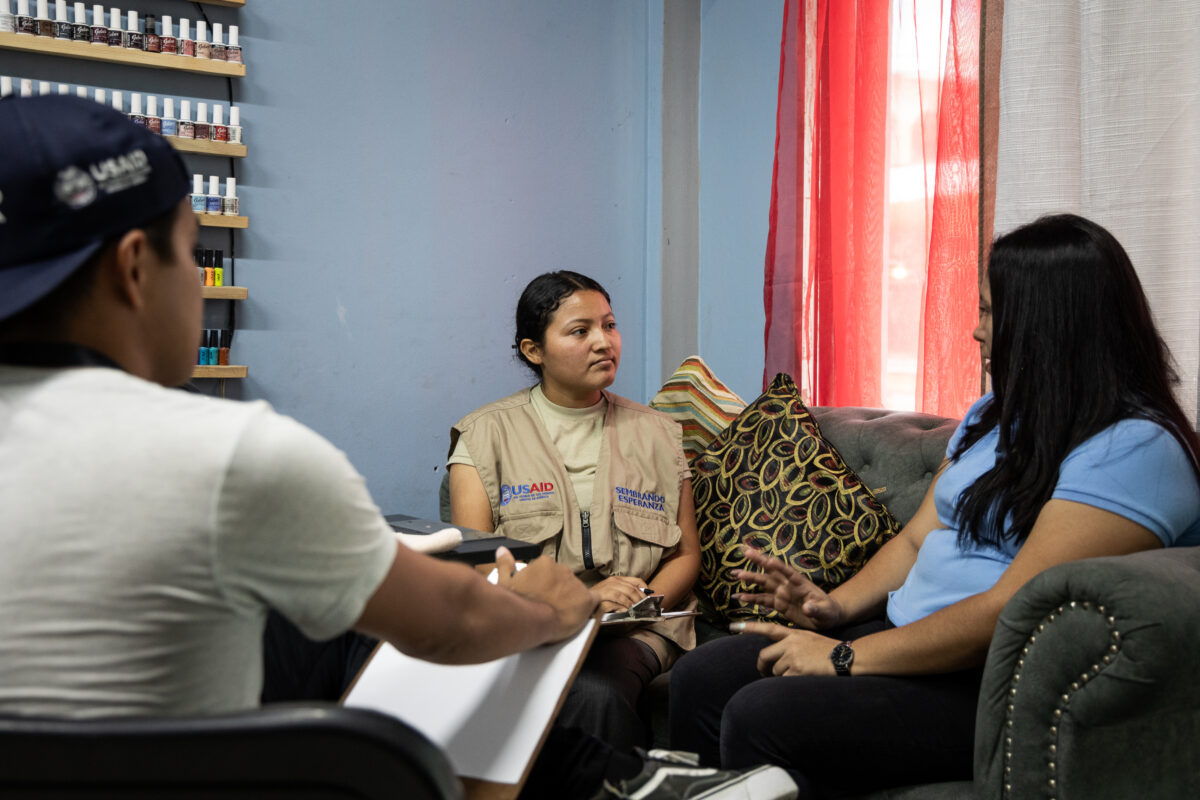
Cuando hablé con Sembrando Esperanza Especialista en Gestión del Conocimiento Gustavo Bardales, Hizo hincapié en que la perspectiva de género era sólo un aspecto de cómo el programa consideraba el estudio.
“El nuevo enfoque de interseccionalidad utilizado en Sembrando Esperanza va más allá de distinguir identidades por factores de género,” Bardales says. “Tiene en cuenta todas las características sociales tanto de mujeres como de hombres., y especialmente para los jóvenes, que conforman y representan un gran porcentaje de la población del país, y su creciente vulnerabilidad a la violencia y la migración irregular. Este enfoque permite diseñar mejores estrategias basadas en la seguridad humana con un enfoque de localización.
Interseccionalidad analiza cómo las identidades sociales superpuestas, como la raza, etnicidad, clase, edad, discapacidad y orientación sexual, entre otros factores, interactúan para dar forma a la exposición individual y colectiva al riesgo.. Este marco permite una comprensión más profunda de cómo interactúan las identidades dentro de los sistemas de poder y opresión., ofreciendo información sobre las diversas necesidades de individuos y comunidades por igual. Emplear un enfoque interseccional en la programación del desarrollo internacional permite que las intervenciones se adapten con mayor precisión para abordar los desafíos únicos que enfrentan los diferentes grupos.
Lanzado en agosto 2022 con enfoque en Honduras, Sembrando Esperanza aplica metodología de fortalecimiento de sistemas para reducir la violencia y la migración irregular. El $37.8 millón, La iniciativa de siete años se centra en mejorar la respuesta de seguridad humana de los sistemas de prevención locales., involucrar a los actores locales en 25 municipios. El programa apoyado por USAID tiene como objetivo equipar a las comunidades, gobiernos locales y proveedores de servicios con las herramientas necesarias para el desarrollo sostenible, considerando factores como el económico, político, ambiental, dinámicas de salud y seguridad, con el objetivo de reducir la migración irregular.
Bajo el objetivo del programa de ampliar los servicios integrales centrados en la familia y los jóvenes., Sembrando Esperanza prioriza intervenciones destinadas a prevenir la violencia y la migración irregular, con un enfoque en jóvenes en riesgo. Comprender los riesgos específicos que enfrentan los jóvenes en función de sus identidades sociales es esencial para adaptar mejor las intervenciones a las necesidades y desafíos específicos que enfrentan las diferentes poblaciones.
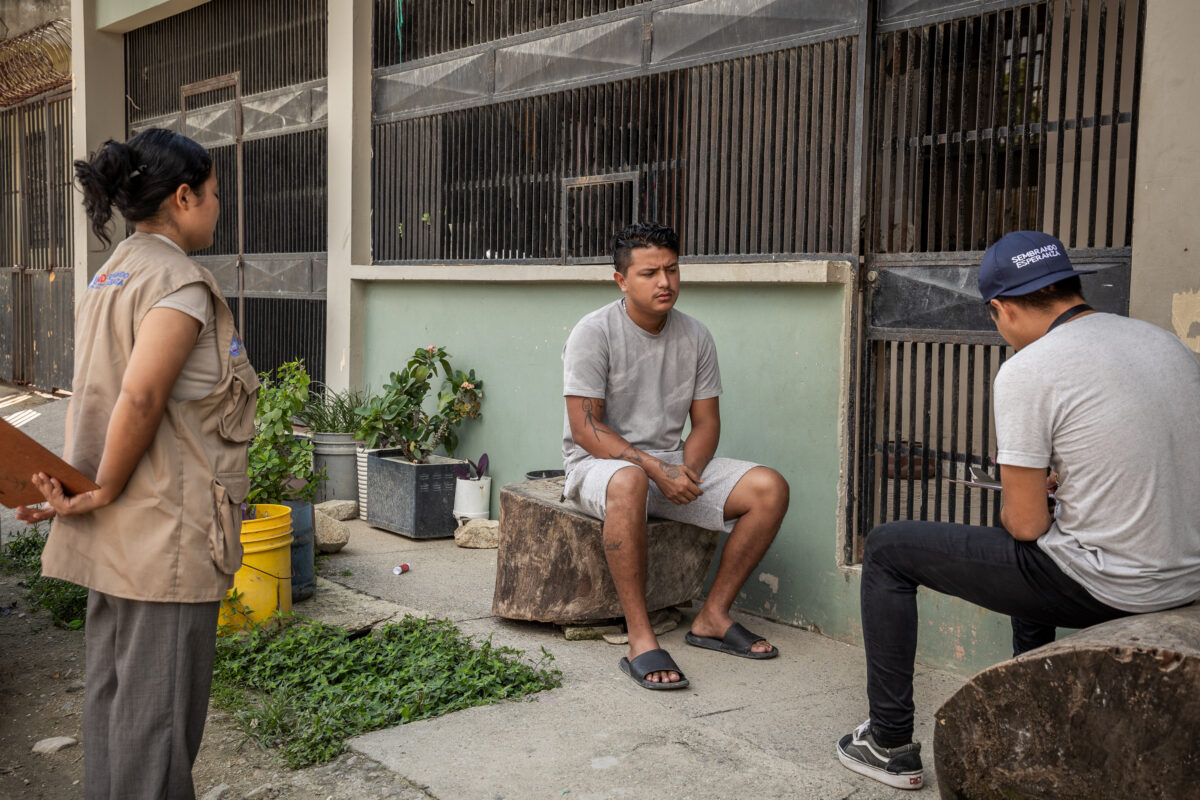
Para apoyar este enfoque específico, Sembrando Esperanza se asoció con una empresa estadounidense bixal desde agosto 2023 a enero 2024 para realizar el análisis de la población objetivo. Usando un enfoque participativo (incluyendo entrevistas con informantes clave, grupos focales y una revisión de la literatura secundaria) El estudio examinó cómo se cruzan varias identidades sociales en los municipios objetivo de Sembrando Esperanza., proporcionando una comprensión más profunda de las vulnerabilidades únicas que enfrentan los diferentes grupos.
Perspectivas sobre identidad y arraigo
Como primer análisis de interseccionalidad de un programa de USAID en Honduras, Los hallazgos han influido significativamente en la capacidad del programa para dirigir las intervenciones de prevención de la violencia hacia los jóvenes y otras poblaciones en mayor riesgo., Identificar factores clave de identidad vinculados al crimen., violencia y migración irregular.
Un descubrimiento clave fue comprender cómo y por qué los jóvenes se sienten arraigados en sus comunidades en función de sus identidades y experiencias interconectadas.. El análisis mostró que el sentido de pertenencia de los jóvenes se basa más fuertemente en la comunidad., o nivel de barrio, en lugar del nivel nacional, e influenciado más por los vínculos vecinales que por otros factores de identidad como el origen étnico. Esta conexión resalta la importancia de diseñar intervenciones que fortalezcan los vínculos comunitarios y el patrimonio cultural a nivel local., garantizar que los esfuerzos resuenen con las experiencias vividas por los jóvenes.
Perfiles de mayor riesgo
Además de identificar amplias categorías de identidad que contribuyen a una mayor marginación en Honduras, El análisis de interseccionalidad desarrolló cinco perfiles clave de personas con identidades compuestas que las colocan en mayor riesgo de experimentar violencia y migración irregular.:
- joven masculino envejecido 11 a 18 que han abandonado la escuela. Estos jóvenes, que a menudo carecen de empleo formal, son vulnerables al reclutamiento de pandillas, trafficking networks and lack of access to social services.
- Joven, madres solteras desplazadas internamente. Las madres jóvenes enfrentan un alto riesgo de ser víctimas de violencia, Violencia de género y trabajo sexual forzado., especialmente si viven en barrios urbanos marginados, tener trabajos de bajos ingresos, are disabled or belong to the LGBTQI+ community.
- Activistas sociales. Esto incluye a aquellos que trabajan en LGBTQI+., Indígena, defensa del medio ambiente y la democracia. Los activistas sociales enfrentan un alto riesgo de convertirse en blanco de la violencia, acoso, intimidación, y hasta homicidio, especially if they reside in rural areas or belong to racialized communities.
- hombres solteros de edad 20 a 29, sin hijos, que son desplazados internos. Estos hombres enfrentan un alto riesgo de migración irregular, especialmente si han sido víctimas de violencia y carecen de habilidades laborales, y son muy vulnerables a experimentar angustia psicológica, trauma, isolation and loss of identity and purpose.
- Mujeres jóvenes sin hijos que abandonaron la escuela y trabajan en empleos mal remunerados o están desempleadas. Mujeres en esta categoría, que han abandonado la educación formal y están trabajando en trabajos poco calificados y mal remunerados, o en trabajo informal, corren un alto riesgo de sufrir violencia de género, trata y matrimonio forzado, and may consider migration to escape their situation.
Impacto de las intervenciones de Sembrando Esperanza
Las ideas del análisis interseccional han sido fundamentales para perfeccionar el enfoque y las intervenciones de Sembrando Esperanza.
Con una comprensión más clara de los perfiles de alto riesgo, El programa ha podido adaptar su apoyo para llegar de manera más efectiva a los jóvenes vulnerables., incluso mediante intervenciones de asesoramiento familiar diseñadas para mejorar sus redes de apoyo.
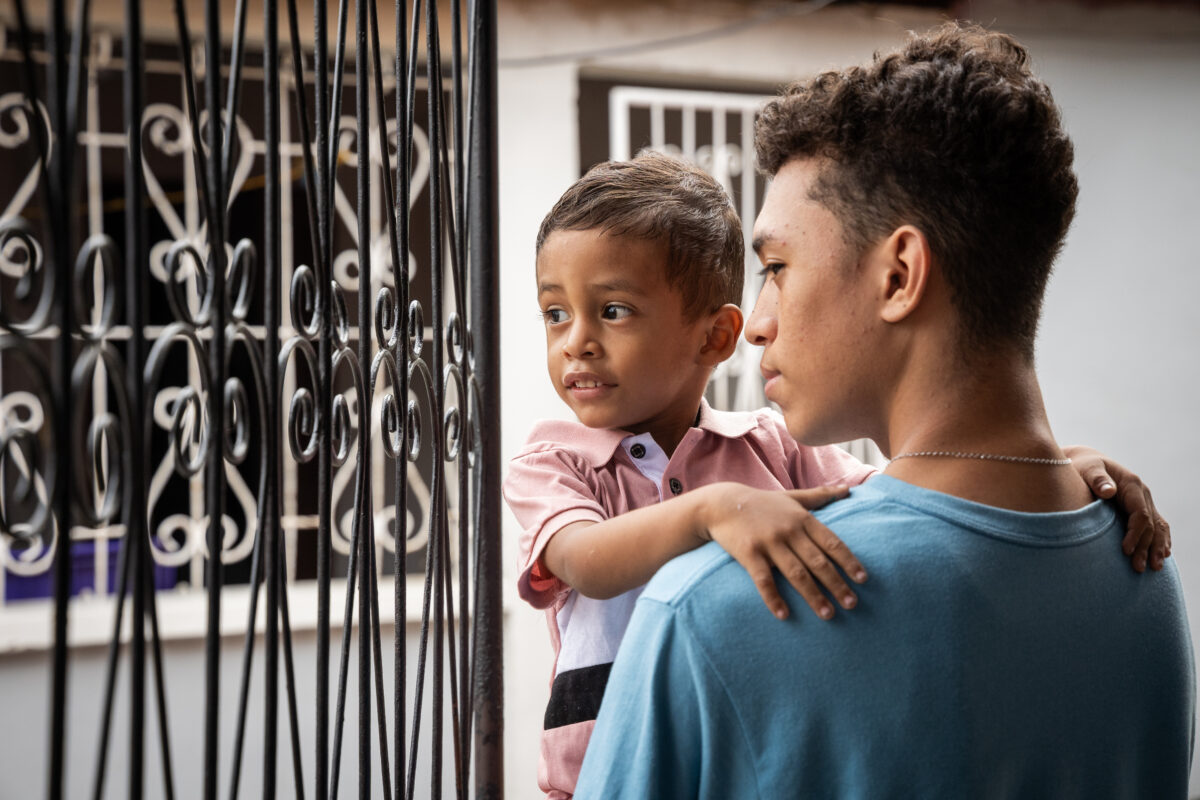
A partir de junio 2024, El programa y sus socios han comenzado a brindar asesoramiento familiar desde hace más de 1,100 familias con jóvenes de alto riesgo. Además, Sembrando Esperanza está trabajando estrechamente con gobiernos municipales y líderes comunitarios para comprender las necesidades e identidades específicas de sus electores., con el objetivo de mejorar su capacidad para proporcionar servicios localizados responsivos.
Las intervenciones de Sembrando Esperanza también priorizan la cohesión comunitaria, activismo y arraigo a nivel barrial. Un ejemplo notable es la colaboración de Sembrando Esperanza con la Vamos Al Parque Foundation y el gobierno construirán un parque infantil y un parque en el barrio Suyapa de Tegucigalpa. Inaugurado en mayo 2024, el parque proporciona un espacio seguro para niños y familias, Fomentar los vínculos familiares y el desarrollo infantil en un entorno seguro y de apoyo.
Recomendaciones y próximos pasos
El informe interseccional ofrece una serie de recomendaciones de políticas para Sembrando Esperanza, gobiernos municipales y nacionales, Organizaciones locales de la sociedad civil y donantes internacionales.. Sembrando Esperanza está difundiendo activamente estos hallazgos entre los actores locales., implementadores de desarrollo, y el gobierno de Honduras, proporcionando orientación valiosa sobre cómo apoyar a las poblaciones vulnerables para reducir la violencia y la migración irregular.
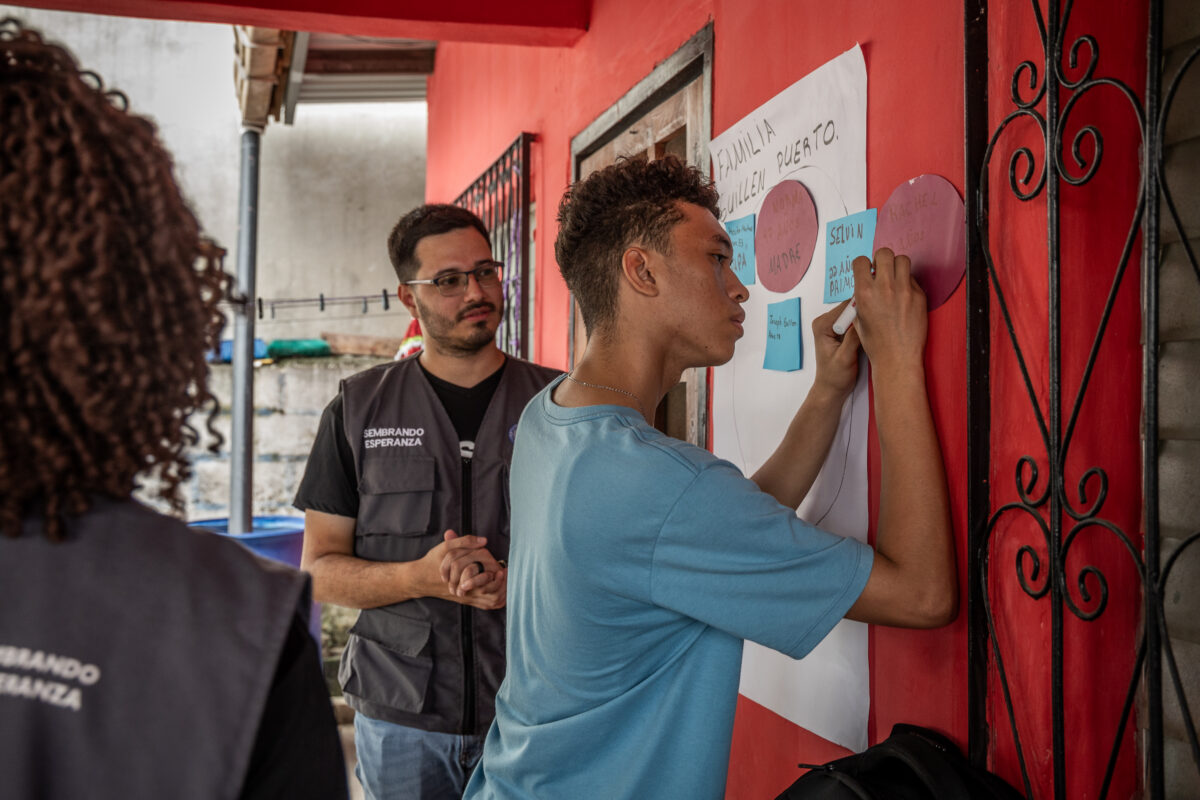
Integrando la interseccionalidad en sus esfuerzos de transversalización de la Igualdad de Género y la Inclusión Social., Sembrando Esperanza ha sentado una base sólida para intervenciones más efectivas y equitativas basadas en matices., datos detallados que capturan las complejidades de la identidad social y la marginación en el contexto local.
Los hallazgos de este análisis están dando forma a objetivos, Programas culturalmente sensibles que abordan los desafíos únicos que enfrentan los grupos en riesgo.. A través de una colaboración continua y un compromiso con enfoques interseccionales, Sembrando Esperanza pretende seguir fomentando la resiliencia, reduciendo vulnerabilidades, y creando caminos hacia una vida más brillante, un futuro más seguro para las comunidades a las que sirve.
Kate Cheatham es directora asociada de programas de Creative Associates International. She earned a Master’s degree in Gender Analysis and Humanitarian Studies from the Fletcher School at Tufts University in May 2021.
